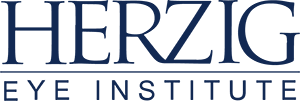Herzig Eye Institute in Refractive Surgery on July 26, 2016
If you’re having difficulty reading labels, menus, newspapers, computer screens, and other objects up close, you’re not alone. “Presbyopia, or the loss of reading vision, affects everyone over 40,” says Dr. Sheldon Herzig, Medical Director at the Herzig Eye Institute in Toronto. “As the body ages, the natural lens of the eye loses part of its elasticity.”
Until recently, the only solutions to the loss of reading vision were reading glasses or bifocals. However, at the Herzig Eye Institute, we perform a number of proven, effective procedures to correct presbyopia, including SMILE, Monovision LASIK, Refractive Lens Exchange (RLE), and Intraocular Collamer (ICL).
Because no two eyes are exactly alike, the Herzig Eye Institute consults with each patient to determine the best option for them.
MONOVISION

With Monovision, one eye is fully corrected for distance while the non-dominant eye is left a little under-corrected to see things up close. The brain integrates the visual information from both eyes and adjusts either immediately or within a few weeks to having each eye focus at a different distance. Most people tolerate this very well and can function most of the time without glasses.
Monovision can be achieved with all of our High Definition Vision® solutions, including SMILE, the next generation of laser vision correction.
SMILE
SMILE is an acronym for SMall Incision Lenticule Extraction, and as the name suggests, the procedure is done with minimal disturbance to the surface of the eye.
It is a minimally invasive, flapless procedure that combines the advantages of the two previous generations of Laser Vision Correction — PRK and LASIK. Unlike previous generations, the SMILE procedure leaves the surface of the cornea almost untouched.
SMILE is safe, effective, and offers many advantages, including predictable results, quick recovery time and minimal discomfort during the healing process.
REFRACTIVE LENS EXCHANGE
Another way to give someone both distance and near vision is with a Refractive Lens Exchange (RLE). The Refractive Lens Exchange is the same procedure as modern cataract surgery, the most common surgical procedure in North America.
Refractive Lens Exchange modifies the focusing power of the eye by removing the eye’s natural lens and replacing it with an intraocular lens that can provide good distance vision, good reading vision or both. A multifocal intraocular lens has the potential to give excellent distance and reading vision in both eyes.
The TECNIS® Symfony intraocular lens is the first and only extended range of vision IOL to correct presbyopia and improve far, intermediate, and near vision, with the decreased need for glasses.
INTRAOCULAR COLLAMER LENS
The Intraocular Collamer Lens is used for patients with high levels of myopia (nearsightedness), hyperopia (farsightedness), or astigmatism that are too extreme for laser vision correction. An Intraocular Collamer Lens (ICL) is also used to treat patients with corneas that should not be treated with a laser vision correction procedure. As a corrective measure for presbyopia, the ICL treatment can be done with monovision, correcting one eye for distance and the other for reading.
The Intraocular Collamer Lens (ICL) is a very thin intraocular lens that is inserted at the edge of the cornea. Unlike Refractive Lens Exchange, where an intraocular lens replaces the eye’s natural lens, the ICL is designed to sit in front of the eye’s natural lens, just behind the iris.
IMPROVED EYESIGHT FOR READING
At the Herzig Eye Institute, we specialize in treating vision problems that arise from aging. With a complimentary, comprehensive examination and consultation, you can learn which option is right for you.
Based on a careful, rigorous diagnostic assessment, your surgeon will review your exam and tailor a unique treatment plan employing one of our High Definition Vision® solutions to address your specific vision needs.




